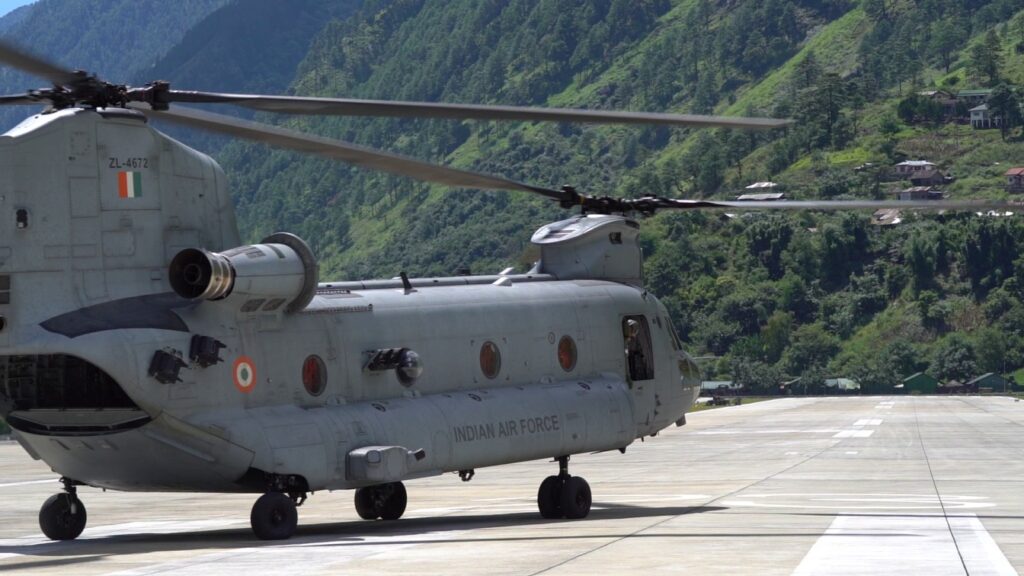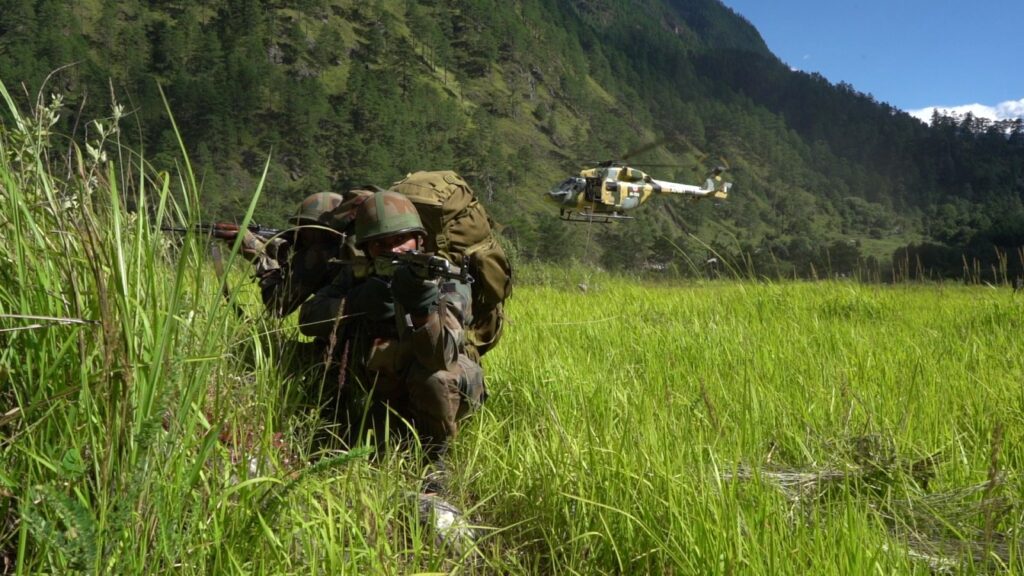ARUNACHAL PRADESH/ASSAM: The faceoff between Indian and Chinese soldiers in the Tawang sector last month may or may not have been one of the reasons for the stalemate in Ladakh to continue at the end of the 13th round of talks between Corps Commanders but the fact that PLA soldiers are testing the waters by making forays into different sectors of the India-China border in the past two months confirms an assessment in India’s national security establishment that China will continue to exert pressure on the LAC through the upcoming winter season and beyond.
This assessment, done in the immediate aftermath of the first round of disengagement in February earlier this year, had factored in rotation of troops on the Chinese side and PLA’s plan to upgrade its infrastructure in Aksai Chin. Even before China started replacing the formations that were deployed during the 2020-21 standoff in Ladakh, India had changed its ORBAT (order of Battle) by ordering a rebalance of its forces to the northern front. As is well known by now, the Indian Army earlier this summer allocated the Mathura-based 1 strike Corps to the Northern Command and the 17 Mountain Strike Corps to the Eastern Command to strengthen its offensive options against China.
As part of the assessment, military planners have also anticipated that China would indulge in ‘hit and run’ tactics against India to test its own forces and also map India’s response to small-, medium- and large-scale exercises-cum-mobilisations and that the PLA would apply pressure at multiple points to try and push the envelope. And repeat the sequence in a year or two.
Since May 2021, events have panned out exactly as anticipated. In August, the Chinese intruded into the Barahoti sector and in September a contingent of PLA soldiers tried to enter the Indian side of the Line of Actual Control (LAC) in Tawang only to face a stiff riposte from the Indian soldiers who reportedly outfoxed and out-manoeuvred the Chinese and even detained them for at least a couple of hours before higher level intervention defused the situation.
The PLA’s military aim was two-fold: assess its own drills as well as the readiness of its troops and record India’s response. Incidentally, in 2020, China’s move towards the LAC with India after finishing the annual Spring exercise in Aksai Chin was led by the 4th and the 6th Divisions. They have now been replaced with the 8th and the 11th Divisions, latest assessments show.
Indian satellites and intelligence operatives had picked up the movement of other formations from Tibet and Xinjiang to their annual exercise areas north and east of the Tibet Highway (G-219)—much farther from the LAC—in areas such as Xiadulla, Tianshui Hui, Kangxiwar etc. Those movements are under constant watch and there is no reason to be alarmed at the moment, military decision-makers say. However, given last years’ experience, the guard is up and adequate forces have been kept in-depth on the Indian side. Many of the troops have been freshly inducted in the past couple of months and have undergone extensive acclimatisation, sources say.
In the overall assessment of likely Chinese moves, Indian decision-makers anticipate an increase in faceoffs in the Eastern Sector, particularly in Arunachal Pradesh. The Indian Army and Indian Air Force have consequently made adequate preparations to take on any fresh challenge they face in the eastern Sector. This author had an opportunity in mid-September 2021 to witness first hand several measures undertaken in the forward areas.

The Air Force, under a five-year-old plan, has strengthened, expanded and modernised key advanced landing grounds in different valleys of Arunachal Pradesh. Pasighat, Walong, Tutting, Mechuka, Vijoynagar, Ziro and Along—all have been improved to allow different aircraft and helicopters to land and take off. Besides, many helipads closer to the LAC than ever before have been made functional to allow both the Army Aviation and IAF helicopters to operate smoothly round the year.
These ALGs and helipads allow IAF and Army to work in tandem by bringing in fresh supplies and inducting troops as well as evacuate health casualties when necessary from these remote locations.
One major force accretion in the Eastern Sector is the induction of the Chinook heavy lift helicopter, bought from the United States. Based in Mohanbari near Dibrugarh, the lone Chinook squadron in the east is now the lifeline for the Indian Army’s forward deployed formations in the mountainous terrain of Arunachal Pradesh. It not only ferries troops but also transports the ultralight howitzers M-777 from one inaccessible valley to the other in difficult weather. It is easy to operate, is robust and has a capacity to lift up to 10 tonnes and more at one go.
The sturdy AN-32 continues to be the mainstay of the IAF’s transport fleet. At Jorhat, its main base, two squadrons of AN-32 keep the supply lines going. The 35-year-old fleet is not easy to maintain but the young ground engineers and crew have adopted several innovative methods to keep the fleet in top shape.
The transport fleet apart, the IAF’s two Su-30 fighter jet bases at Tezpur and Chabua are getting additional space and firepower. At Chabua, the runway is being strengthened and lengthened. The base itself is expanding to accommodate future force augmentation. Air defence assets of the air force and the army are being integrated to provide seamless radar and air defence coverage.

Working together is the key in the difficult mountains; be it on a small helipad close to the LAC or at the bigger air base, the Air Force and the Army work in tandem to maintain essential supplies, fuel and ammunition to the soldiers on ground. The varied terrain in Arunachal Pradesh also requires troops to be adept in rock climbing and rappelling. Constant training is the only way to master the skill.
But basic tactics and skills apart, the Indian Army is now inducting more and more advanced technology in support of the foot soldier guarding the frontier in this remote inaccessible area. Thanks to improved communication facilities, the leader of a long range patrol can now talk to higher headquarters in real time. This would have been unthinkable some years ago. Technology induction has improved surveillance and reconnaissance too.
Technology apart, there is greater emphasis on improving infrastructure—better habitats, broader roads, building key bridges and even better defences— closer to the border.
Concrete underground communication trenches not very far from the LAC symbolise the push for better facilities.
Almost every infantry unit in this sector now has a small force called ghatak platoons ready to carry slithering operations behind-the-enemy lines insertions whenever required. After years of relatively less attention to this sector, the Indian military is now intensely focusing on plugging the gaps as well as improve infrastructure to take on any future challenge.
